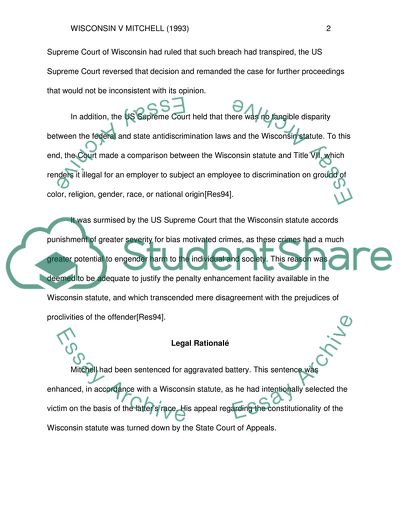Cite this document
(“Analysis of Wisconsin v Mitchell (1993) Case Essay”, n.d.)
Analysis of Wisconsin v Mitchell (1993) Case Essay. Retrieved from https://studentshare.org/law/1603108-hate-crime-case
Analysis of Wisconsin v Mitchell (1993) Case Essay. Retrieved from https://studentshare.org/law/1603108-hate-crime-case
(Analysis of Wisconsin V Mitchell (1993) Case Essay)
Analysis of Wisconsin V Mitchell (1993) Case Essay. https://studentshare.org/law/1603108-hate-crime-case.
Analysis of Wisconsin V Mitchell (1993) Case Essay. https://studentshare.org/law/1603108-hate-crime-case.
“Analysis of Wisconsin V Mitchell (1993) Case Essay”, n.d. https://studentshare.org/law/1603108-hate-crime-case.


